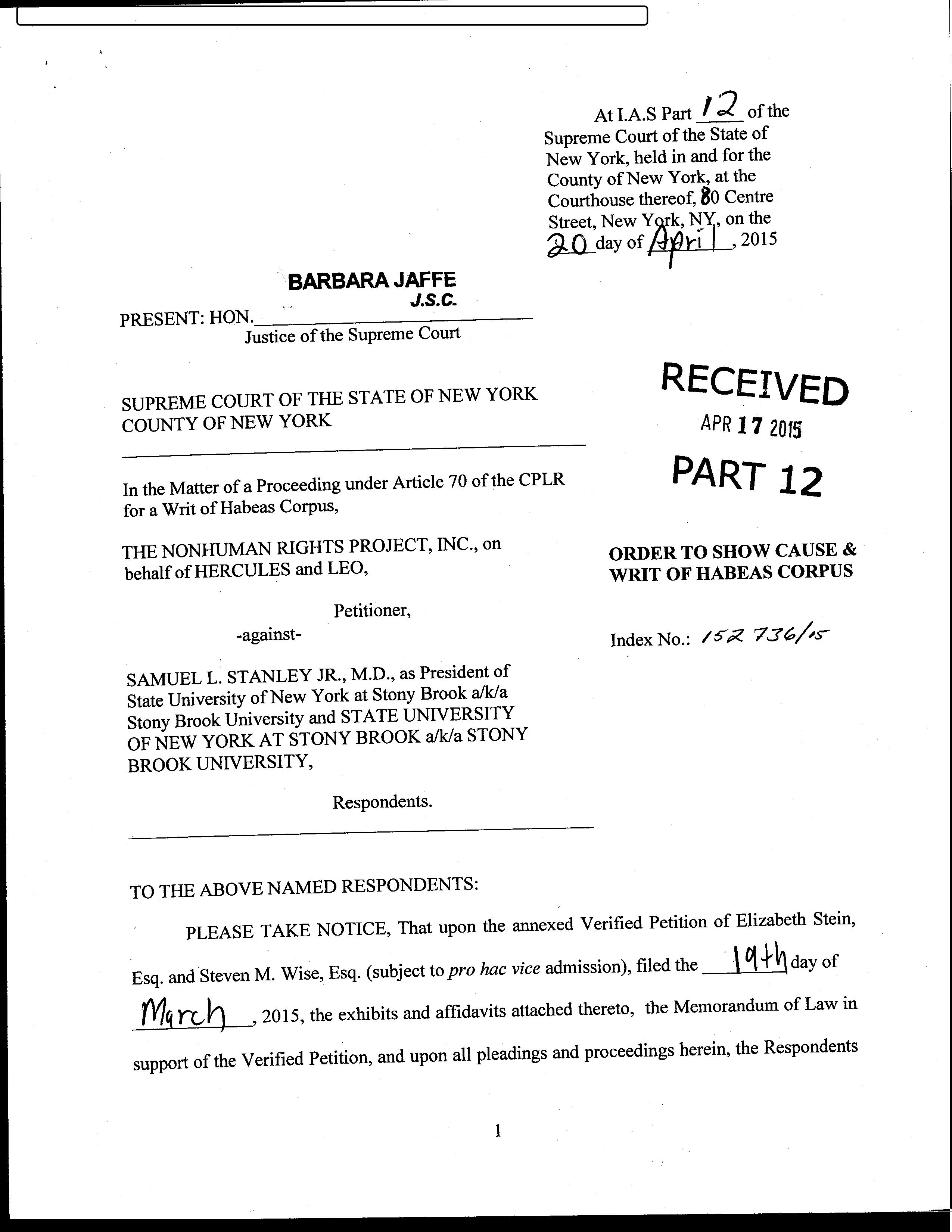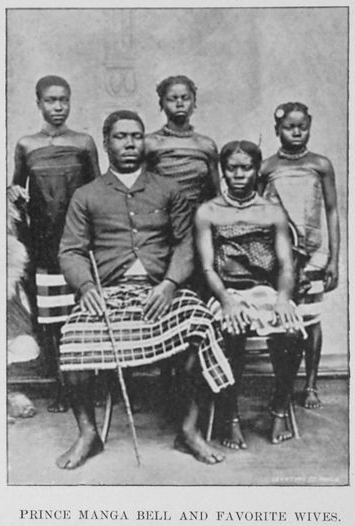|
Clawson V. United States
''Clawson v. United States'', 113 U.S. 143 (1885), was a case regarding a Utah territorial statute which authorized an appeal by a defendant in a criminal action from a final judgment of conviction, which provides that an appeal shall stay execution upon filing with the clerk a certificate of a judge that in his opinion there is probable cause for the appeal, and further provides that after conviction, a defendant who has appealed may be admitted to bail as of right when the judgment is for the payment of a fine only, and as matter of discretion in other cases, does not confer upon a defendant convicted and sentenced to pay a fine and be imprisoned the right, after appeal and filing of certificate of probable cause, to be admitted to bail except within the discretion of the court.. Background The appellant, Rudger Clawson, having been found guilty by a jury in the District Court for the Third Judicial District of Utah, of the crimes of polygamy and unlawful cohabitation ... [...More Info...] [...Related Items...] OR: [Wikipedia] [Google] [Baidu] |
Utah Territory
The Territory of Utah was an organized incorporated territory of the United States that existed from September 9, 1850, until January 4, 1896, when the final extent of the territory was admitted to the Union as the State of Utah, the 45th state. At its creation, the Territory of Utah included all of the present-day State of Utah, most of the present-day state of Nevada save for Southern Nevada (including Las Vegas), much of present-day western Colorado, and the extreme southwest corner of present-day Wyoming. History The territory was organized by an Organic Act of Congress in 1850, on the same day that the State of California was admitted to the Union and the New Mexico Territory was added for the southern portion of the former Mexican land. The creation of the territory was part of the Compromise of 1850 that sought to preserve the balance of power between slave and free states. With the exception of a small area around the headwaters of the Colorado River in present-day C ... [...More Info...] [...Related Items...] OR: [Wikipedia] [Google] [Baidu] |
Rudger Clawson
Rudger Clawson (March 12, 1857 – June 21, 1943) was a member of the Quorum of the Twelve Apostles of the Church of Jesus Christ of Latter-day Saints (LDS Church) from 1898 until his death in 1943. He also served as President of the Quorum of the Twelve Apostles from 1921 until his death. For five days in 1901 he was a member of the First Presidency of the LDS Church. Biography Clawson was born in Salt Lake City, Utah Territory, to Hiram Bradley Clawson and Margaret Judd of Canada. While serving his mission in Georgia, he faced many challenges, not the least of which was the mounting anti-Mormonism in that sector. On July 21, 1879, Clawson and his missionary companion were standing at Varnell Station, Georgia, when they were surrounded by an angry mob of anti-Mormons. One of the mobbers shot and killed his companion, Joseph Standing. One of the mobbers then turned and pointed to Clawson, and said, "Shoot that man!" Clawson coolly faced the mob and folded his arms. He exclaim ... [...More Info...] [...Related Items...] OR: [Wikipedia] [Google] [Baidu] |
Aver
{{dab ...
Aver may refer to: People * , Russian botanist Places * Aver lake or Aver See, Germany Organisations * AVER (band) * AVer Information, Taiwanese company * American Veterans for Equal Rights See also *Vow A vow ( Lat. ''votum'', vow, promise; see vote) is a promise or oath. A vow is used as a promise, a promise solemn rather than casual. Marriage vows Marriage vows are binding promises each partner in a couple makes to the other during a wedd ... [...More Info...] [...Related Items...] OR: [Wikipedia] [Google] [Baidu] |
Salt Lake County, Utah
Salt Lake County is located in the U.S. state of Utah. As of the 2020 United States Census, the population was 1,185,238, making it the most populous county in Utah. Its county seat and largest city is Salt Lake City, the state capital. The county was created in 1850. Salt Lake County is the 37th most populated county in the United States and is one of four counties in the Rocky Mountains to make it into the top 100. (Others being Denver County and El Paso County, Colorado and Clark County, Nevada.) Salt Lake County is the only county of the first class in Utah - under the Utah Code (Title 17, Chapter 50, Part 5) is a county with a population of 700,000 or greater. Salt Lake County occupies the Salt Lake Valley, as well as parts of the surrounding mountains, the Oquirrh Mountains to the west and the Wasatch Range to the east (essentially the entire Jordan River watershed north of the Traverse Mountains). In addition, the northwestern section of the county includes part of th ... [...More Info...] [...Related Items...] OR: [Wikipedia] [Google] [Baidu] |
United States Marshals Service
The United States Marshals Service (USMS) is a federal law enforcement agency in the United States. The USMS is a bureau within the U.S. Department of Justice, operating under the direction of the Attorney General, but serves as the enforcement arm of the United States federal courts to ensure the effective operation of the judiciary and integrity of the Constitution. It is the oldest U.S. federal law enforcement agency, created by the Judiciary Act of 1789 during the presidency of George Washington as the "Office of the United States Marshal". The USMS as it stands today was established in 1969 to provide guidance and assistance to U.S. Marshals throughout the federal judicial districts. The Marshals Service is primarily responsible for the protection of judges and other judicial personnel, the administration of fugitive operations, the management of criminal assets, the operation of the United States Federal Witness Protection Program and the Justice Prisoner and Alien Tran ... [...More Info...] [...Related Items...] OR: [Wikipedia] [Google] [Baidu] |
Habeas Corpus
''Habeas corpus'' (; from Medieval Latin, ) is a recourse in law through which a person can report an unlawful detention or imprisonment to a court and request that the court order the custodian of the person, usually a prison official, to bring the prisoner to court, to determine whether the detention is lawful. The writ of ''habeas corpus'' was described in the eighteenth century by William Blackstone as a "great and efficacious writ in all manner of illegal confinement". It is a summons with the force of a court order; it is addressed to the custodian (a prison official, for example) and demands that a prisoner be brought before the court, and that the custodian present proof of authority, allowing the court to determine whether the custodian has lawful authority to detain the prisoner. If the custodian is acting beyond their authority, then the prisoner must be released. Any prisoner, or another person acting on their behalf, may petition the court, or a judge, for a ... [...More Info...] [...Related Items...] OR: [Wikipedia] [Google] [Baidu] |
Writ
In common law, a writ (Anglo-Saxon ''gewrit'', Latin ''breve'') is a formal written order issued by a body with administrative or judicial jurisdiction; in modern usage, this body is generally a court. Warrants, prerogative writs, subpoenas, and ''certiorari'' are common types of writ, but many forms exist and have existed. In its earliest form, a writ was simply a written order made by the English monarch to a specified person to undertake a specified action; for example, in the feudal era a military summons by the king to one of his tenants-in-chief to appear dressed for battle with retinue at a certain place and time. An early usage survives in the United Kingdom, Canada, and Australia in a writ of election, which is a written order issued on behalf of the monarch (in Canada, by the Governor General and, in Australia, by the Governor-General for elections for the House of Representatives, or State Governors for state elections) to local officials ( High Sheriffs of every c ... [...More Info...] [...Related Items...] OR: [Wikipedia] [Google] [Baidu] |
Trial
In law, a trial is a coming together of Party (law), parties to a :wikt:dispute, dispute, to present information (in the form of evidence (law), evidence) in a tribunal, a formal setting with the authority to Adjudication, adjudicate claims or disputes. One form of tribunal is a court. The tribunal, which may occur before a judge, jury, or other designated trier of fact, aims to achieve a resolution to their dispute. Types by finder of fact Where the trial is held before a group of members of the community, it is called a jury trial. Where the trial is held solely before a judge, it is called a bench trial. Hearing (law), Hearings before administrative body, administrative bodies may have many of the features of a trial before a court, but are typically not referred to as trials. An appeal (appellate proceeding) is also generally not deemed a trial, because such proceedings are usually restricted to a review of the evidence presented before the trial court, and do not permit the ... [...More Info...] [...Related Items...] OR: [Wikipedia] [Google] [Baidu] |
Utah Supreme Court
The Utah Supreme Court is the supreme court of the state of Utah, United States. It has final authority of interpretation of the Utah Constitution. The Utah Supreme Court is composed of five members: a chief justice, an associate chief justice, and three justices. All justices are appointed by the governor of Utah, with confirmation by the Utah Senate. The five justices elect one of their own to serve as chief justice and another to serve as associate chief justice, each for a term of four years. History Before present-day Utah became a state, it was organized into a provisional state, called the State of Deseret. Its constitution established a three-member supreme court. In 1850, the United States Congress passed "An Act to Establish a Territorial Government for Utah", Section 9 of which provided that "the judicial power of said territory shall be vested in a Supreme Court, District Court, and Justices of the Peace". This act converted Deseret's supreme court into a territori ... [...More Info...] [...Related Items...] OR: [Wikipedia] [Google] [Baidu] |
Indictment
An indictment ( ) is a formal accusation that a legal person, person has committed a crime. In jurisdictions that use the concept of felony, felonies, the most serious criminal offence is a felony; jurisdictions that do not use the felonies concept often use that of an indictable offence, an offence that requires an indictment. Australia Section 80 of the Constitution of Australia provides that "the trial on indictment of any offence against any law of the Commonwealth shall be by jury". The High Court of Australia has consistently used a narrow interpretation of this clause, allowing the Parliament of Australia to define which offences proceed on indictment rather than conferring a universal right to a jury trial. Section 4G of the ''Crimes Act 1914'' provides that "offences against a law of the Commonwealth punishable by imprisonment for a period exceeding 12 months are indictable offences, unless the contrary intention appears". Canada A direct indictment is one in which the ca ... [...More Info...] [...Related Items...] OR: [Wikipedia] [Google] [Baidu] |
Cohabitation
Cohabitation is an arrangement where people who are not married, usually couples, live together. They are often involved in a romantic or sexually intimate relationship on a long-term or permanent basis. Such arrangements have become increasingly common in Western countries since the late 20th century, being led by changing social views, especially regarding marriage, gender roles and religion. More broadly, the term ''cohabitation'' can mean any number of people living together. To "cohabit", in a broad sense, means to "coexist". The origin of the term comes from the mid 16th century, from the Latin ''cohabitare'', from co- 'together' + habitare 'dwell'. Social changes leading to increase Today, cohabitation is a common pattern among people in the Western world. In Europe, the Scandinavian countries have been the first to start this leading trend, although many countries have since followed. Mediterranean Europe has traditionally been very conservative, with religion ... [...More Info...] [...Related Items...] OR: [Wikipedia] [Google] [Baidu] |
Polygamy
Crimes Polygamy (from Late Greek (') "state of marriage to many spouses") is the practice of marrying multiple spouses. When a man is married to more than one wife at the same time, sociologists call this polygyny. When a woman is married to more than one husband at a time, it is called polyandry. In contrast to polygamy, monogamy is marriage consisting of only two parties. Like "monogamy", the term "polygamy" is often used in a ''de facto'' sense, applied regardless of whether a state recognizes the relationship.For the extent to which states can and do recognize potentially and actual polygamous forms as valid, see Conflict of marriage laws. In sociobiology and zoology, researchers use ''polygamy'' in a broad sense to mean any form of multiple mating. Worldwide, different societies variously encourage, accept or outlaw polygamy. In societies which allow or tolerate polygamy, in the vast majority of cases the form accepted is polygyny. According to the ''Ethnographic A ... [...More Info...] [...Related Items...] OR: [Wikipedia] [Google] [Baidu] |






